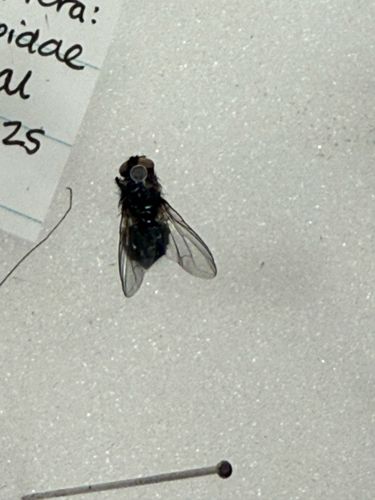Blow Fly
Scientific Name: Calliphoridae (Family)
Order & Family: Diptera (Order), Calliphoridae (Family)
Size: Typically 8-10 mm in length, though can vary from 4-16 mm.

Natural Habitat
Globally distributed, often found near decaying organic matter such as carrion, feces, and garbage; also in urban, rural, and natural environments.
Diet & Feeding
Adult blow flies feed on nectar, sap, and decaying organic matter. Larvae (maggots) are scavengers, feeding primarily on carrion, but some species are parasitic.
Behavior Patterns
Attracted to decaying flesh and other organic materials for oviposition. Females lay eggs on carrion shortly after death. Larvae develop rapidly, undergoing several instars before pupating. Adults are strong fliers and are common around human settlements.
Risks & Benefits
Risks: Can be vectors for disease transmission (e.g., bacteria causing food poisoning) due to their feeding habits on decaying matter and subsequent contact with human food. Some species can cause myiasis (infestations of living tissues) in animals and humans. Benefits: Important decomposers, aiding in the breakdown of organic waste. Used in forensic entomology to estimate time of death. Larvae of some species are used in maggot therapy for wound debridement in medicine.
Identified on: 9/25/2025